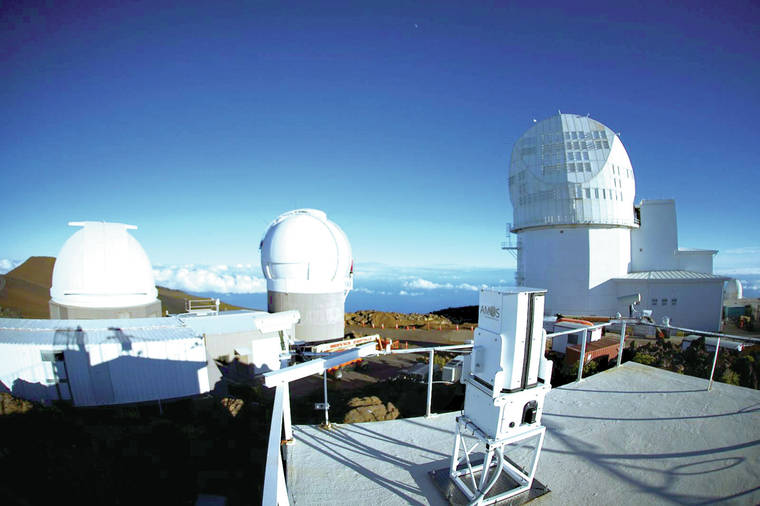HILO — An instrument on a Maunakea observatory intended to track shooting stars is finally operational after more than a year of delays.
The Automatic Meteor Observation System — or AMOS — was installed on the roof of the control building of the Submillimeter Array on Maunakea in September 2018 but was not activated until October this year because of weather delays.
“We were hoping to turn them on, and then we had some really bad winter storms, and they couldn’t be turned on for another six months,” said Robert Jedicke, a collaborator on the AMOS project and faculty member at the University of Hawaii’s Institute for Astronomy.
Jedicke said the five-month-and-counting occupation of Maunakea Access Road by people protesting the planned construction of the Thirty Meter Telescope on Maunakea did not impede the repairs to the instrument.
After waiting for new parts, the instrument became operational in October and began automatically monitoring the night sky for shooting stars.
AMOS was developed at Comenius University in Bratislava, Slovakia, and consists of relatively small instruments located at strategic locations around the globe.
The Maunakea instrument has a sister on Haleakala — which was similarly disabled by storms last year — and four more instruments are located in Slovakia, and two each in Chile and the Canary Islands. Two more sites for AMOS instruments are planned in Australia and Namibia.
The paired instruments allow AMOS to triangulate a meteor’s exact position and derive its past trajectory and velocity, allowing researchers to learn more about the origin of such objects.
“It lets us figure out the chemical history of the solar system,” said Roy Gal, a specialist at the Institute for Astronomy. “If we learn more, we can figure out how the solar system formed.”
Jedicke emphasized that AMOS does not track objects outside Earth’s atmosphere, but only tracks meteors — particles burning as they descend through the atmosphere, colloquially called shooting stars.
Other, more powerful instruments are used to track potentially dangerous asteroids long before they enter the atmosphere.
Although meteors are exceedingly small, no larger than a grain of sand, they are so numerous that they are estimated to increase the mass of the Earth by 20,000 tons per year.
Jedicke said AMOS also could be used to determine the impact site of a meteorite, but added it is extremely unlikely for a shooting star to land on Hawaii.
Email Michael Brestovansky at mbrestovansky@hawaiitribune-herald.com.



